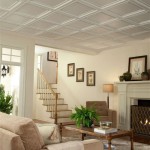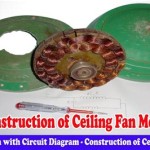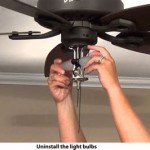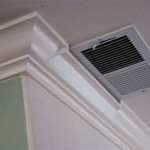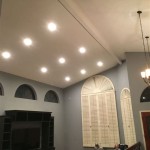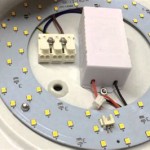How To Cut Crown Molding For Ceiling Corners
Crown molding adds a touch of elegance and sophistication to any room, enhancing its architectural appeal. However, the process of installing crown molding, particularly cutting the corners, can be daunting for both novice and experienced DIY enthusiasts. Accurate cuts are crucial for a seamless and professional-looking finish. This article provides a comprehensive guide on how to cut crown molding for ceiling corners, covering the essential tools, techniques, and considerations to ensure a successful installation.
Understanding Crown Molding Geometry and Angles
Before attempting any cuts, it is essential to grasp the fundamental geometry and angles involved. Crown molding sits at an angle between the wall and the ceiling. The spring angle is the angle at which the molding sits against the wall. Common spring angles are 38 degrees, 45 degrees, and 52 degrees. Understanding the spring angle of your molding is critical, as it dictates how the molding will be positioned in the miter saw during the cutting process. Incorrect positioning will lead to inaccurate cuts and mismatched corners.
Ceiling corners are rarely perfectly square (90 degrees). Most rooms will have corners that are slightly out of square, which necessitates adjusting the miter saw angle to compensate. Interior corners, where two walls meet inside the room, require an "inside corner cut." Exterior corners, where walls protrude outward, require an "outside corner cut." Each type of corner requires a specific cutting technique.
Additionally, knowing the difference between a miter angle and a bevel angle is important. The miter angle refers to the angle of the saw blade relative to the fence (the back of the saw). The bevel angle is the angle of the saw blade relative to the table of the saw. For most crown molding cuts, the bevel angle will be set to zero (blade perpendicular to the table), and only the miter angle will be adjusted.
Essential Tools and Materials
The right tools are essential for accurate and efficient crown molding installation. The following is a list of necessary tools and materials:
- Miter Saw: A power miter saw, preferably with a compound miter function, is crucial for making precise angle cuts. A compound miter saw allows for both miter and bevel adjustments.
- Crown Molding Jig or Support: A crown molding jig or support system is highly recommended to hold the molding at the correct angle during cutting. These jigs ensure consistent and accurate cuts.
- Measuring Tape: A high-quality measuring tape is vital for accurate measurements of the walls and molding pieces.
- Pencil: A sharp pencil is needed for marking the molding before cutting.
- Safety Glasses: Eye protection is paramount when operating power tools.
- Ear Protection: Prolonged exposure to loud machinery can damage hearing.
- Clamps: Clamps are useful for securing the molding to the jig or saw fence.
- Wood Glue: Wood glue is used to reinforce joints and create a stronger bond between molding pieces.
- Caulk: Caulk is applied to fill gaps and create a seamless finish.
- Finishing Nails: Finishing nails are used to secure the molding to the wall.
- Nail Gun: A nail gun speeds up the installation process and provides a secure hold.
- Stud Finder: A stud finder helps locate wall studs for secure nailing.
- Coping Saw (Optional): A coping saw is useful for creating coped joints for inside corners.
- Sandpaper (Optional): Sandpaper helps smooth rough edges and create a seamless transition between molding pieces.
Cutting Crown Molding for Inside Corners
Inside corners require a slightly different approach than outside corners. There are two primary methods for dealing with inside corners: mitering and coping.
Mitering Inside Corners:
This method involves cutting both pieces of molding at a 45-degree angle (for a 90-degree corner) so they meet flush in the corner. If the corner is not exactly 90 degrees, the angle will need to be adjusted accordingly. To determine the correct miter angle, divide the actual corner angle by two. For example, if the corner is 92 degrees, divide by two to get a 46-degree miter angle. One piece of molding will be cut at 46 degrees to the left, and the other piece will be cut at 46 degrees to the right. To cut the molding correctly, it must be placed in the miter saw in the same orientation it will have when installed on the wall. This means the bottom of the molding (the part that sits against the wall) should be placed against the saw fence, and the top of the molding (the part that sits against the ceiling) should be placed on the saw table.
For an inside corner, the piece that will be on the left side of the corner (when viewed from the front) should be cut with the miter saw set to the left. The piece that will be on the right side of the corner should be cut with the miter saw set to the right. Remember the phrase "Left goes left, right goes right" as a helpful memory aid.
Coping Inside Corners:
Coping is a technique where one piece of molding is cut square and butts directly into the corner. The second piece is then cut to match the profile of the first piece, creating an overlapping joint. This method is particularly useful for corners that are significantly out of square, as it allows for a more precise fit. To cope an inside corner, first, miter the second piece of molding as if you were going to miter the corner. Then, using a coping saw, carefully cut along the profile line, removing the waste material. The goal is to create a back-cut, meaning the back of the profile is slightly angled to allow for a tighter fit against the first piece of molding. Sand the coped edge lightly for a smoother fit. Test the fit and adjust as needed until the coped piece matches the profile of the first piece perfectly. Coping is generally considered superior to mitering for inside corners, particularly when the corners are not perfectly square, as it allows for a more forgiving and visually appealing joint.
Cutting Crown Molding for Outside Corners
Outside corners present a different set of challenges. Like inside corners, precise measurements and accurate cuts are essential for a professional-looking result.
To cut crown molding for an outside corner, the process is reversed compared to inside corners. If the corner is 90 degrees, each piece of molding will be cut at a 45-degree angle. For corners that are not 90 degrees, again, divide the total corner angle by two to determine the correct miter angle.
The key difference is the orientation of the molding in the miter saw. For an outside corner, the piece that will be on the left side of the corner (when viewed from the front) should be cut with the miter saw set to the *right*. The piece that will be on the right side of the corner should be cut with the miter saw set to the *left*. This is the opposite of the inside corner rule. Think of it as "Left goes right, right goes left".
As with inside corners, ensure the molding is placed in the miter saw in the same orientation as it will be installed on the wall. The bottom of the molding should be against the fence, and the top should be on the table. Use a crown molding jig or support to maintain the correct angle during the cut. After cutting, test the fit of the outside corner. If the fit is not perfect, make small adjustments to the miter angle until the pieces meet flush. Small gaps can be filled with caulk, but minimizing gaps through accurate cuts is always preferable.
Tips for Accurate Cuts and Professional Results
Achieving professional-looking results with crown molding requires attention to detail and a commitment to accuracy. Here are some additional tips to help ensure a successful installation:
Measure Accurately: Measure the walls carefully and double-check your measurements before cutting any molding. It is always better to cut a piece slightly long and then trim it down than to cut it too short.
Test Cuts: Before cutting the actual molding, make test cuts on scrap pieces of wood to verify the accuracy of your miter saw settings. This can save you from wasting expensive molding material.
Consistent Positioning: Ensure the crown molding is consistently positioned in the miter saw for each cut. Using a crown molding jig or support system is highly recommended to maintain the correct angle.
Sharp Blades: Use a sharp blade on your miter saw for clean, precise cuts. A dull blade can cause splintering and inaccurate cuts.
Support Long Pieces: When cutting long pieces of molding, use additional support stands to prevent the molding from sagging. This will help ensure accurate cuts.
Caulk and Fill: Use caulk to fill small gaps and create a seamless finish. Wood filler can be used to fill nail holes and imperfections in the molding.
Practice: Crown molding installation requires practice. Don't be discouraged if your first few attempts are not perfect. With patience and attention to detail, you can achieve professional-looking results.
Consider Staining/Painting Before Installation: Staining or painting the crown molding before installation can be easier and more efficient than trying to do so after it's installed, especially for intricate designs.
By following these guidelines and taking the time to understand the fundamentals of crown molding geometry, anyone can successfully cut and install crown molding, adding a touch of elegance to their home. While it may initially seem daunting, the satisfaction of a well-executed crown molding installation is well worth the effort.

How To Cut Crown Moulding The Home Depot

How To Cut An Inside Crown Molding Corner By Creative

Six Essential Tools For A Seamless Crown Molding Install Top Shelf Diy

How To Cut Crown Moulding The Home Depot

Installing Crown Molding Program 6 Advanced Techniques With Gary Katz

How To Install Crown Molding

How To Install Crown Molding Young House Love

How To Cut Crown Molding For Beginners Outside Corner

Installing Crown Moulding On A Sloped Ceiling Doityourself Com Community Forums

How To Cut Crown Molding Inside And Outside Et Painters
Related Posts

